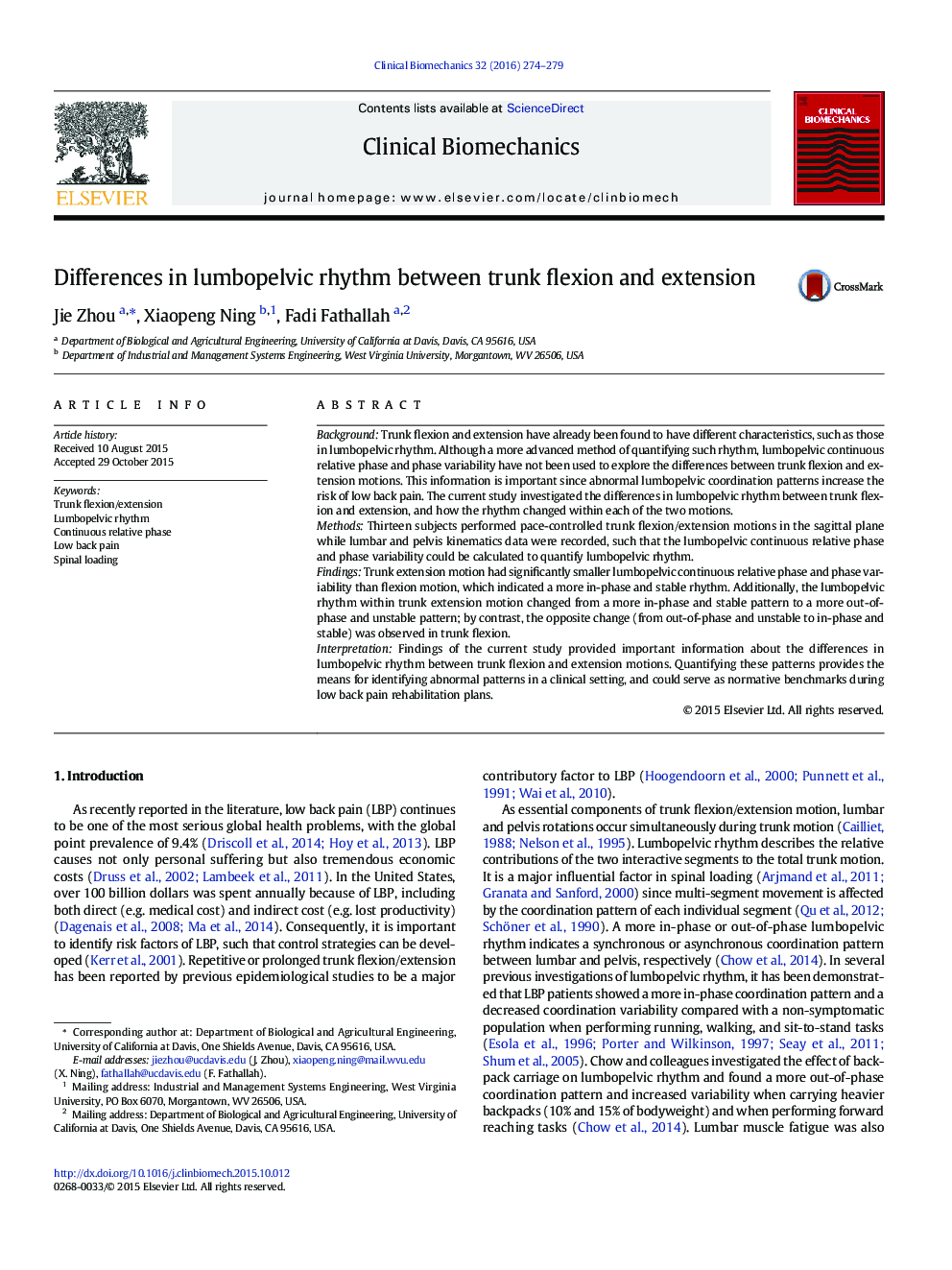| کد مقاله | کد نشریه | سال انتشار | مقاله انگلیسی | نسخه تمام متن |
|---|---|---|---|---|
| 6204667 | 1603746 | 2016 | 6 صفحه PDF | دانلود رایگان |
- Trunk extension had a more in-phase and stable lumbopelvic rhythm than trunk flexion.
- Trunk extension changed from a more in-phase to a more out-of-phase motion pattern.
- Trunk extension changed from a more stable to a more unstable coordination pattern.
- The opposite changes in coordination patterns were observed in trunk flexion motion.
- Quantifying these help identifying abnormal motion patterns in a clinical setting.
BackgroundTrunk flexion and extension have already been found to have different characteristics, such as those in lumbopelvic rhythm. Although a more advanced method of quantifying such rhythm, lumbopelvic continuous relative phase and phase variability have not been used to explore the differences between trunk flexion and extension motions. This information is important since abnormal lumbopelvic coordination patterns increase the risk of low back pain. The current study investigated the differences in lumbopelvic rhythm between trunk flexion and extension, and how the rhythm changed within each of the two motions.MethodsThirteen subjects performed pace-controlled trunk flexion/extension motions in the sagittal plane while lumbar and pelvis kinematics data were recorded, such that the lumbopelvic continuous relative phase and phase variability could be calculated to quantify lumbopelvic rhythm.FindingsTrunk extension motion had significantly smaller lumbopelvic continuous relative phase and phase variability than flexion motion, which indicated a more in-phase and stable rhythm. Additionally, the lumbopelvic rhythm within trunk extension motion changed from a more in-phase and stable pattern to a more out-of-phase and unstable pattern; by contrast, the opposite change (from out-of-phase and unstable to in-phase and stable) was observed in trunk flexion.InterpretationFindings of the current study provided important information about the differences in lumbopelvic rhythm between trunk flexion and extension motions. Quantifying these patterns provides the means for identifying abnormal patterns in a clinical setting, and could serve as normative benchmarks during low back pain rehabilitation plans.
Journal: Clinical Biomechanics - Volume 32, February 2016, Pages 274-279
